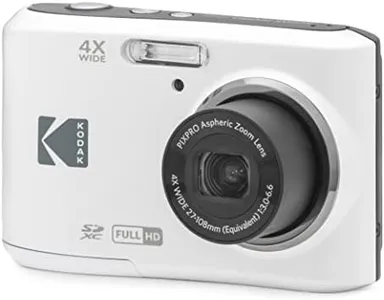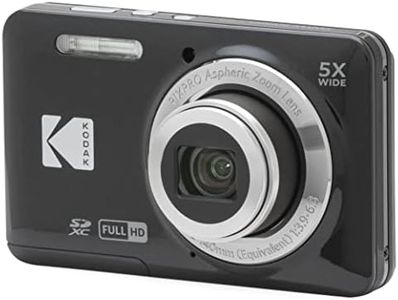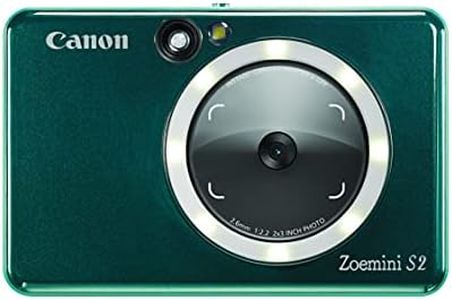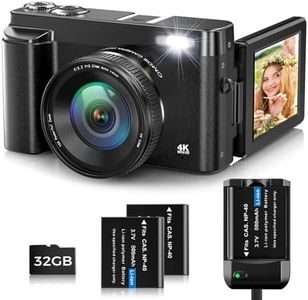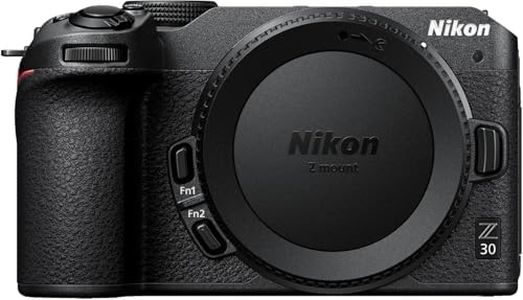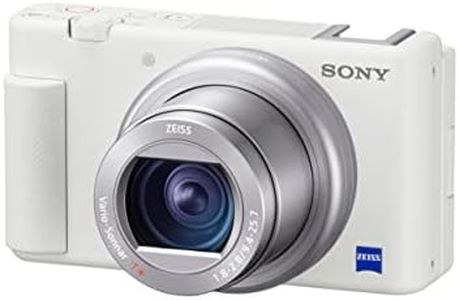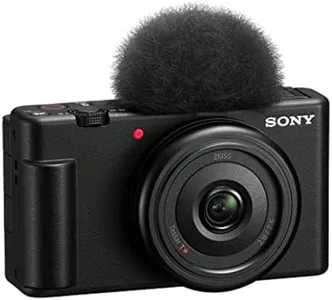We Use CookiesWe use cookies to enhance the security, performance,
functionality and for analytical and promotional activities. By continuing to browse this site you
are agreeing to our privacy policy
10 Best Compact Digital Cameras
From leading brands and best sellers available on the web.By clicking on a link to a third party's website, log data is shared with that third party.
Buying Guide for the Best Compact Digital Cameras
When choosing a compact digital camera, it's important to think about how you plan to use it. Compact cameras are designed to be easy to carry and simple to use while still offering better image quality and more features than most smartphones. Before making a purchase, consider what scenarios you want to use the camera in, like travel, family gatherings, or everyday snapshots, and whether you value features like zoom, manual control, or connectivity. Understanding the key specifications will help you find a camera that fits your photography needs and lifestyle.Sensor SizeSensor size refers to the physical dimensions of the image sensor inside the camera. A larger sensor generally captures more light, which can improve image quality, especially in low light. Compact cameras usually have smaller sensors compared to larger cameras, but within compact cameras, sensor size can still vary. Standard compact sensors are usually around 1/2.3-inch, while premium compacts might have 1-inch sensors or even larger. If you want better image quality and the ability to blur backgrounds more, look for a camera with a larger sensor. For casual everyday use or sharing online, smaller sensors still provide good results and keep the camera more pocket-friendly.
Zoom RangeZoom range tells you how close you can get to your subject without moving. It’s usually described as an ‘optical zoom’, for example, 3x or 10x. Short zoom ranges (3-5x) are fine for landscapes and people, while longer zooms (10x or more) let you capture distant subjects like wildlife or sports. If you travel a lot or want to photograph faraway objects, choose a longer zoom. Remember, higher zoom can mean a bigger camera, so balance your needs for reach against pocketability.
Image StabilizationImage stabilization is a feature that helps reduce blurriness from shaky hands, especially in low light or when using zoom. Most modern compact cameras have either optical or digital stabilization. Optical stabilization is often better because it physically moves lens elements to compensate for shake. If you take a lot of photos in low light or zoom in often, make sure the camera has good image stabilization.
Autofocus PerformanceAutofocus performance relates to how quickly and accurately the camera can focus on a subject. Some compact cameras focus almost instantly, while others may struggle in low light or when the subject is moving. If you often take photos of children, pets, or action scenes, look for a camera known for fast and reliable autofocus. For mostly still-life or landscapes, autofocus speed is less critical.
Manual ControlsManual controls let you take charge of settings like shutter speed, aperture, and ISO for more creative photography. Some compact cameras offer full manual control, while basic models rely mostly on automatic modes. If you’re interested in learning more about photography and experimenting with different looks, seek out a camera that allows manual adjustments. If you prefer simplicity and just want good-looking photos with minimal effort, automatic models are a better fit.
Connectivity (Wi-Fi/Bluetooth/NFC)Connectivity options such as Wi-Fi, Bluetooth, or NFC let you transfer photos to your smartphone or computer wirelessly. This makes it easy to share pictures on social media or back them up. If you like sharing your photos quickly or want to control your camera remotely with your phone, look for these features. If you usually use a memory card or cable to transfer your photos, connectivity options are less important.
Size and WeightSize and weight determine how easy the camera is to carry around. Some compact cameras are truly pocket-sized, while others with long zooms or bigger sensors might be bulkier but still more portable than larger cameras. If you want a camera to fit in your pocket or bag for spontaneous shooting, make sure it’s small and light enough for your comfort. If you don’t mind a slightly bigger camera for better features, you might choose something less pocketable.
Battery LifeBattery life is measured in how many photos you can take on a single charge. Compact cameras typically have enough battery for a day’s casual shooting, but some last longer than others. If you travel often or don’t want to worry about charging frequently, check the estimated shots per charge. If you mostly take short photo sessions or don’t mind carrying a spare battery, battery life is less crucial.
